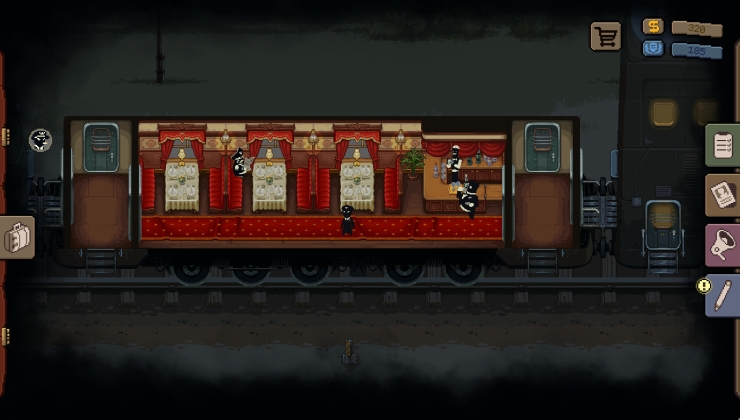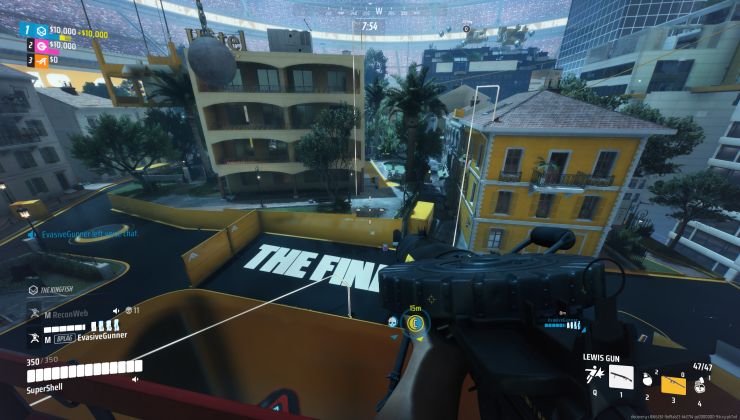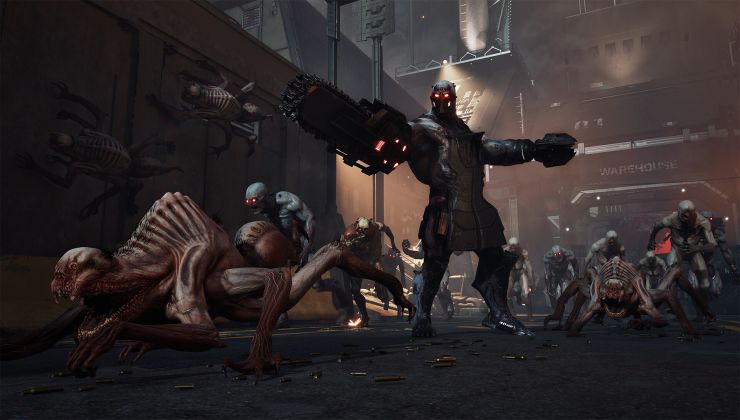Valve released a couple more Steam Beta Client releases recently for both Steam Deck and Desktop so here's all you need to know.
On the Steam Deck side, you may be pleased to see that Valve has now added a global game resolution override feature to the display settings page. Available in Settings->Display->Advanced, here you can set the maximum resolution allowed to be used by games. This feature technically isn't new, since it was available per-game already, but having it global is great for those who play a lot docked and want everything to be available at a higher resolution.
The full changes for Steam Deck Beta August 22nd:
General
- Added a dropdown to Settings->Display->Advanced to select the maximum resolution allowed to be used by games. This is the global version of the 'Game Resolution' dropdown already available under Game Settings->General.
- Added Sign Out to the power menu on Deck.
Steam Input
- Fixed an issue where automatic cursor visibility actionset changes did not work on the Steam Link App Mobile Touch Controller
- Fixed an issue where modifying a config could result in a crash when returning to the game
Game Recording
- Added a list view to media manager to provide a view of all the play sessions and media from each session.
- Added setting to enable turning recording on/off per game.
- Added setting to control the duration and bitrate of background recording per game.
- Improved error reporting in the save/share sheet.
- Fixed an issue where you couldn't unpause in the last second of a clip or recording
And August 23rd:
Desktop
- The controller configurator in the desktop overlay will now receive escape key presses instead of the key press automatically dismissing the whole overlay
Game Recording
- Fixed a regression in the game recording per-game settings, which would use the compiled-in default minutes to keep, or use the compiled-in default bit rate, instead of the user's preferences
- Fixed list view not updating when a game exits.
While over on Steam Desktop a lot of the changes are the same, but there's a couple of differences. Here's the August 22nd changes:
General
- Fixed a crash when adding a new Steam Library folder on a network drive.
Steam Input
- Fixed an issue where automatic cursor visibility actionset changes did not work on the Steam Link App Mobile Touch Controller.
- Fixed an issue where modifying a config on Deck could result in a crash when returning to the game.
Game Recording
- Added new list view to media manager to provide a view of all the play sessions and media from each session.
- Added setting to enable turning recording on/off per game.
- Added setting to control the duration and bitrate of background recording per game.
- Copy to Clipboard on screenshots will now copy the image and the file to enable pasting into more places.
- Improved error reporting in the save/share sheet.
- Fixed an issue where you couldn't unpause in the last second of a clip or recording.
And August 23rd for Desktop:
Steam Input
- The controller configurator in the desktop overlay will now receive escape key presses instead of the key press automatically dismissing the whole overlay.
Game Recording
- Fixed a regression in the game recording per-game settings, which would use the compiled-in default minutes to keep, or use the compiled-in default bit rate, instead of the user's preferences.
Linux
- Fix store page not rendering on some NVidia systems.
Steam Deck gets a global resolution override
Finally!
Is it better than AMD FSR? I must admit that I can't compare, I don't have a Windows partition.
I want rotation override for external screens.
Do we know if Valve is working to bring something similar to lossless scaling to SteamOS? It seems it does "miracles" on Windows side, on ANY game.I could be wrong (no Steam Deck), but isn't that what Gamescope does?
Is it better than AMD FSR? I must admit that I can't compare, I don't have a Windows partition.
I have a CRT monitor that I have that's underused because it's extremely difficult to get custom resolution and refresh rates working on Wayland (or Gamescope-session) compared to X11. I've looked at guides on EDID spoofing, and it's extremely obtuse. The launch parameters to force a custom resolution and refresh rate on Linux only really works for a single resolution. Despite my CRT supporting 480p at 160Hz, and supporting lower resolutions (Which would be nice for RetroArch with accurate scanlines), I'm hardpressed to find a single Windows or Wayland thing that makes this easy.
Fix store page not rendering on some NVidia systems.
Can confirm, I can enable GPU accelerated rendering in web views again.
Do we know if Valve is working to bring something similar to lossless scaling to SteamOS? It seems it does "miracles" on Windows side, on ANY game.I could be wrong (no Steam Deck), but isn't that what Gamescope does?
Is it better than AMD FSR? I must admit that I can't compare, I don't have a Windows partition.
Gamescope has different system wide upscalers (Linear, Pixel, FSR, NIS), but from what I understand, lossless scaling is Windows only and works differently. Instead of lowering the resolution, you lower the fps cap to, Let's say 30 and lossless scaling will raise it to 60fps.
I would be curious to try that on SteamOS. This said, in-game FSR3 should give better results.
Take this with a pinch of salt, it's just my understanding.
and works differentlyIt works exactly the same in principle, you need to lower the game's resolution and then it will be upscaled with the selected algorithm. LS just offers more upscalers. Plus there's Frame Gen (interpolation), which can also be implemented in gamescope, but probably only FSR.
and works differentlyIt works exactly the same in principle, you need to lower the game's resolution and then it will be upscaled with the selected algorithm. LS just offers more upscalers. Plus there's Frame Gen (interpolation), which can also be implemented in gamescope, but probably only FSR.
Ok! So the thing about fps cap is tied to the Frame Gen part? That's probably why I read that FSR3 is better than Lossless scaling; it includes Frame Gen, if I remember correctly?
Ok! So the thing about fps cap is tied to the Frame Gen part? That's probably why I read that FSR3 is better than Lossless scaling; it includes Frame Gen, if I remember correctly?FSR3 Frame generation is integrated by the game developers into the game engine. AFAIK the algorithm for FSR3 frame gen can be used without integration, but it will look worse this way. This is how it works in Lossless Scaling (and potentially in gamescope)









 How to set, change and reset your SteamOS / Steam Deck desktop sudo password
How to set, change and reset your SteamOS / Steam Deck desktop sudo password How to set up Decky Loader on Steam Deck / SteamOS for easy plugins
How to set up Decky Loader on Steam Deck / SteamOS for easy plugins
See more from me